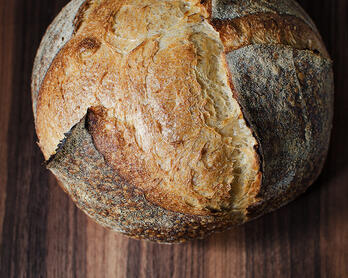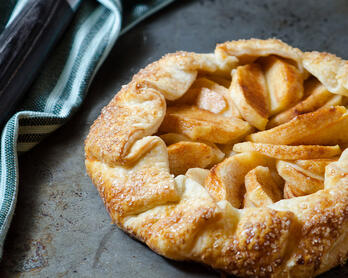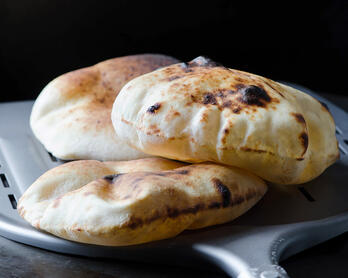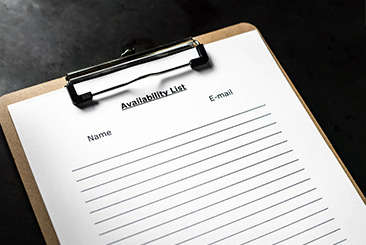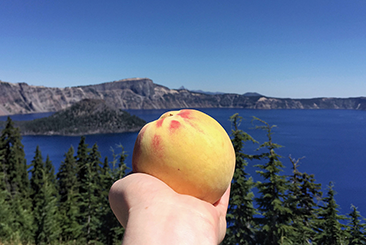My Favorite Cooking Tools
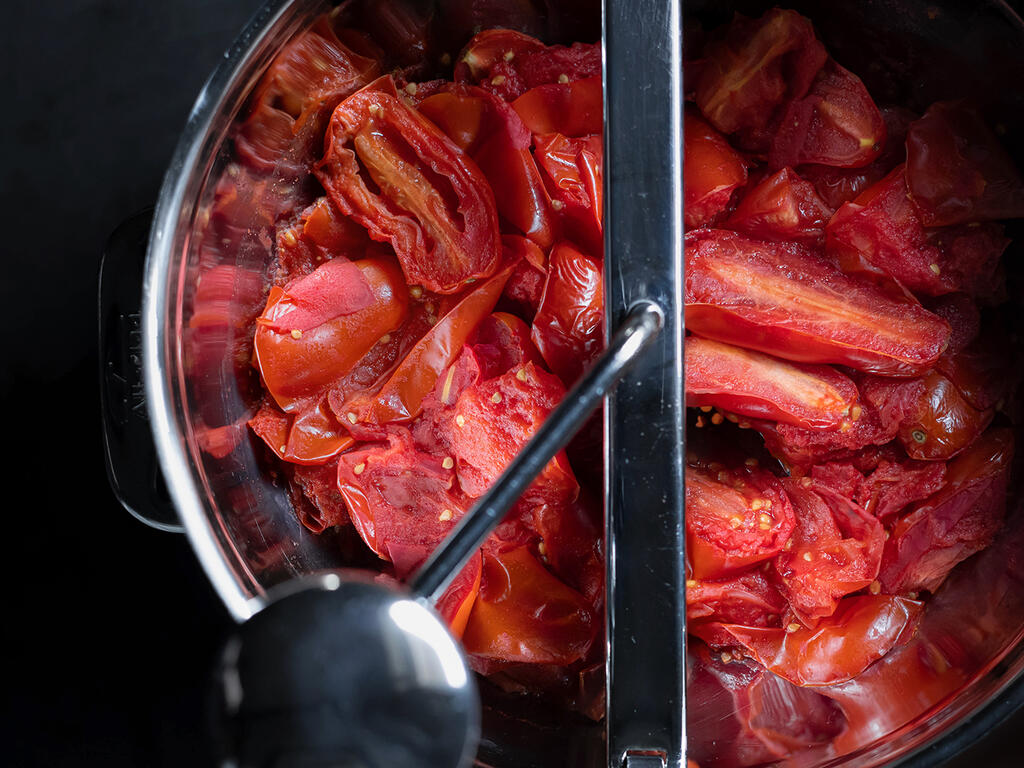
I have owned most of my cooking tools for years and several have siblings on our Airstream. Since relevant equipment is mentioned in each post, it seemed worthwhile to gather the gear I regularly use into one place. Lucky me that the process of putting this list together turned into a kitchen organization party. On that note, I recommend having everything in its place from whisks to ingredients since an orderly space makes for a more enjoyable cooking experience. Mise en place for life.
This page will be a living document so I'm kicking things off with my top 50 60 (give or take) divided into 7 sections. Jump links are included below and the exact product is listed unless otherwise indicated. There are a number of tools missing but constraints were necessary if this post was ever going to see the light of day. I'll add to the inventory over time.
- Measure All the Things
- Baking & Sourdough
- Coffee
- A Watched Pot (or Pan)
- Shimmy, Shake, & Strain
- Slice, Dice, & Juice
- Odds & Ends
Before You Go...
Most of my stainless tools look virtually brand new even though many are 10-years loved. I recommend hand washing stainless steel even if the manufacturer says it's dishwasher safe. The exception to this rule is when a fine mesh strainer has been through a particularly sticky situation. And never put your knives (paring, chef, etc.) in the dishwasher. Ever.
Measure All The Things
From Pumpkin Tea Cake to Spicy Pork Stew, I prefer to incorporate weight and temperature readings whenever possible. This penchant for measuring doesn't constrain experimentation, it just ensures that I document things and end up with a repeatable process. I use one or more of these tools daily.
- Thermapen Digital Thermometer - I have three Thermapen digital thermometers that are distributed between my home, the Airstream, and my mother-in-law's house. They're fast, easy to clean, and the probe makes a perfect cake tester.
- OXO Scale - There are two scales in my kitchen. The workhorse is an OXO model that I purchased over 10 years ago and only recently had to replace. RIP scale #1. It's a sturdy cooking companion that repeatedly gets covered in flour, sauce, or whatever else is flying around the kitchen. I recommend keeping liquids away from the screen since they can find their way inside. That being said, the scale seems to dry out and keep on measuring. Note: My original scale with the black pull-out display is now made in all stainless steel. Watch out for the online sellers who are price-gouging and charging $75 for the older model. As far as I can tell, the new all stainless version is the same.
- Acaia Scale - Pour-over coffee is part of our morning routine so I decided to invest in the Acaia since it has a timer and .01 gram measurements. A number of 3rd-wave coffee shops around town use it which indicates the device can take a beating. I’ve had the Acaia for a couple years now and really like it . Lovely design, couldn't be easier to clean, and it comes in handy when measuring smaller quantities of herbs and salt. I recommend keeping the pamphlet that comes with the scale since the "touch once for this" and "touch twice for that" buttons can be a little confusing at first. Purchasing Note: This scale is an investment but the price I found on Amazon is inflated. Buy it from the manufacturer or other independent seller.
Which is my preferred scale? That's like asking which child is the favorite. If forced to choose, I would say the pull-out screen on the OXO makes it more practical for everyday use. That would be my choice if I only owned one.
- Mini Measuring Cup - I’ve purchased five of these little guys for home and the Airstream. They’re handy for everything from the ubiquitous "2 tablespoons of olive oil in the pan" to Scratch Margaritas.
- Plunger Mini Measuring Cup - Very handy for measuring sticky substances such as molasses, honey, and agave. While writing this post, I noticed that it comes in larger sizes. It's tempting since I frequently use molasses and honey but I have yet to take the plunge.
- Rectangle Measuring Spoons - The round tablespoons I have don't fit into a spice jar so I prefer a rectangular shape. America's Test Kitchen gave the linked set a high rating and suggested they fit into "all spice jars".
Baking & Sourdough
Bread
- Lodge Cast Iron Double Cooker - Relatively inexpensive pan that has brought endless sourdough bread joy into our life. The pan traps the steam inside during the first 20 minutes of baking (then you remove the lid) which helps develop a beautiful crust. Lodge's double cooker is also great for charring vegetables and cooking tortillas.
- OXO Scale - Extended notes under Measure All The Things above. If you're baking naturally-leavened bread (or anything), you should own a scale.
- Thermapen Digital Thermometer - An important tool for managing dough temperature (DT). I have three Thermapen digital thermometers that are distributed between my home, the Airstream, and my mother-in-law's house. They're fast, easy to clean, and the probe makes a perfect cake tester.
- 9" Proofing Basket - Tartine Bread's country recipe (cut in half) is the model for my sourdough and a 9" basket works well for one shaped round of dough. The linked basket comes with a scraper and scoring lame. I like that shape for a bowl scraper and actually link to a version below.
- Flour Sack Towels - I don't flour my dough when placing it in the proofing basket because I don't like flour on my top crust. Instead, I line the basket with a removable flour sack towel. To transfer the bread from the basket to the hot cast iron pan, I place an upside-down baking sheet firmly on top, turn the basket over, then remove the basket and gently peel off the towel. I can then use the baking sheet like a pizza peel and slide the shaped dough into the pan. Note that the dough that comes into contact with the baking sheet has been thoroughly dusted with a 50/50 mix of whole grain and white rice flour.
- Silicone Gloves - I have multiple pairs of these and they work well. Fabric gloves don't cut it with a 500°F pan.
- Scoring Lame + Extra Blades - This is the only lame I've owned though there are several different kinds available. In a pinch I've used a single-edge razor but that can be a little tricky around a 500°F pan.
- Dough/Bench Scraper - My right hand tool, or rather it often functions as my right hand. When making Flaky All-butter Pie Dough, the bench scraper is essential since it allows me to chop, scrape, and fold the dough with minimal contact between the butter and my warm hand. Also a necessary tool for shaping and cutting bread dough. I have a dough scraper from Sur la Table (ruler on two sides) and Norpro (ruler on one side - Amazon). Including both options depending on where you prefer to shop.
- Plastic Bowl Scraper - Used primarily for scraping down the sides of the bowl after mixing or when transferring the dough to the work bench. The one I have came with a Central Milling order so the linked item is comparable (both are straight and trapezoidal). Perhaps a rounded side and a flat side would be more useful but I haven't bothered to research that. My free scraper has been doing a solid job for many years now.
- Large Glass Bowl - I've had the same set of nested glass bowls since college. The linked items aren't the same but a bowl is a bowl for these purposes. The glass allows you to see the bubbles forming along the bottom which helps gauge how far along the fermentation is.
General Baking
- Roccbox - I bought the Roccbox primarily for pizza but have since made roasted vegetables and sourdough pita in it. After numerous happy Sunday bakes (naturally-leavened dough recipe is here), I can confirm that this oven is an engineering marvel and worth the investment. Not only can you bake at 800°F, but the oven is portable. Just fold in the legs, wrap the strap around the body, and off you go. A few pop-up pizza spots around town use the Roccbox.
- KitchenAid Pro Mixer and KitchenAid Artisan Mixer- I was gifted a KitchenAid Pro and decided to keep my Artisan to see if I would use both. It turns out that I do. When making smaller batches of dough, the Pro is too big and the paddle doesn't sufficiently engage the ingredients at the bottom of the bowl. That being said, the Artisan is perfect for most kitchens so that is my suggestion of the two. I make larger batches of stiff dough that require the bigger mixer so having both works for me.
- Slip-proof Bowl (also comes in a set) - I always reach for this bowl when making batter that is stirred by hand such as Mozza's Rosemary Olive Oil Madeleines or Tartine's Pumpkin Tea Cake, Zucchini Bread, and Apple Walnut Tea Cake. The silicon bottom grips the counter just enough to stabilize the bowl while I mix.
- Rolling Pin - I use a handmade dowel rolling pin and unfortunately the maker appears to be retired. This pin is a pretty close match.
Coffee
- Baratza Virtuoso Coffee Grinder - I used the Capresso Infinity Burr Grinder grinder for over a decade and then upgraded to the Baratza Virtuoso. The Capresso is still in great shape and travels on the Airstream when we need it. Purchasing Note: The Baratza Virtuoso I link to and the Capresso are about the same price because the new Virtuoso model has a digital display. You don't need a digital display so the old model is a good deal in my opinion. Why must everything have screens and newfangled tech. And those pesky kids need to get off my lawn.
- Bee House Ceramic Coffee Dripper - I switched from the V60 to the Bee House many years ago and am happy with the coffee I turn out. The V60 requires some level of skill so it makes sense that I didn't have much success with it as a beginner. I would be curious to give the V60 another go now that I understand a little more about flow, temperature, and grind size.
- Fellow Stagg EKG - UPDATE: After many years and much deliberation, I switched from the Hario kettle to the Stagg EKG for home brewing. If you're serious about good coffee (or if you like seriously good coffee) the temperature and flow control is a game changer. This is not meant as a slight against the Hario, I still use my Hario Tea Kettle + Thermometer Lid on the Airstream and think they're great tools.
- Acaia Scale - An extended note for the Acaia scale is under "Measure all the Things". If you don't want to invest in two scales that's no problem, go with the OXO as a good all-purpose device.
A Watched Pot (or Pan)
- Le Creuset 7 1/4-Quart Dutch Oven - This is my workhorse and pretty much the only enamel cast-iron pot that I use. I have a second 5-quart Le Creuset that I like very much and pull out for larger meals, but the 7 1/4-quart is my primary cooking vessel. From stews to chili and applesauce, I have been making everything in it for over 10 years.
- All-Clad 12-Quart Multi-cooker - I always have homemade Roasted Vegetable Stock and/or Chicken Stock in the freezer and use this pot to make it. If you're cooking up pasta for a group, the basket insert and capacity are helpful. This is the same size as what I own but the inserts have been redesigned. I'm happy with my pot but can see how the added holes help with draining.
- All-Clad Double Burner Griddle - Sourdough Pancakes are an important part of my life (importance is relative), so this griddle joined the kitchen with my first set of quality pans. I occasionally make flat-top burgers on it as well since the pan-to-meat contact is good and there is plenty of room for several patties. If you regularly cook for a group, I imagine a double burner pan would come in handy.
- 9-inch Springform Pan - All of my springform pans are made by Kaiser. They're great for cheesecake and Fresh Ginger Cake with Honey Whipped Cream and Candied Kumquats. Some are tinplated(?) with a waffle bottom and the others are the nonstick charcoal color, the latter recommended by Cook's Illustrated. This wasn't a conscious choice, it's just what the stores had and/or I adopted them from someone over the years. I've had good experiences with all of them - no leaks or other issues. I can't find the tin versions online so the charcoal is linked. Nordic's springform is also on CI's recommended list.
Shimmy, Shake, & Strain
- Rösle Food Mill - This one is a favorite for both its form and function. The Rösle food mill effortlessly skins and processes mashed potatoes, applesauce, pomodoro sauce, and more. An alternative is the OXO ricer. I have one at my mother-in-law's house and found it works well for mashed potatoes and applesauce. One note is that I process smaller quantities and peel everything first when using the OXO tool.
- Rösle Wire Strainer - I had a spider strainer that turned into a violent little thing. Wires would come loose and stab me but for some reason I tolerated this for years. I finally replaced it with Rösle's skimmer (they make many of the stainless tools in this list) and am happy with that decision. Cook's Illustrated also rates Rösle's skimmer at the top of the list. Though the width looks small online, the capacity is great. Bonus that it doesn't have those little wires that can break and cut your hand.
- All-Clad Fine Mesh Strainer Set - Mesh strainers serve as flour sifters, rice rinsers, and roasted eggplant drainers.
- Salad Spinner - I'm not sure how my salad spinner migrated into my life but it has been with me for many years and spins me right 'round, baby, right 'round. The linked item is the same brand and seems to be an updated version with a stainless bowl that offers a 2-in-1 package. Spin the greens and then use the bowl to toss them with your dressing of choice. I don't recommend using plastic with vinegar-based ingredients. The string and handle is a sensible design since it means you don't have to pump or crank to get the salad to whirl around. There's a a non-stainless version as well.
Slice, Dice, & Juice
Slice
- Rösle Mandoline/Slicer - This tool has a beautiful design and is really easy to use and clean. Pickled Red Onions, Gjelina's Spicy Sweet Pickles, and Superiority Burger's Sloppy Dave all call for a mandoline. I recommend buying a replacement blade to have on hand though it took quite a while before I swapped mine out (probably waited too long).
- Vegetable Peeler - I own the Rösle and OXO and use them both for different jobs. If I were to recommend one, it would be the OXO. The reason is that the Rösle is requires a light touch or it will cut too deep. On the other hand, I appreciate how sharp the Rösle is when I need to peel butternut squash or make asparagus ribbons for pizza.
- Knives - A piece of advice I wish I had received long ago is to skip the knife set. Instead, buy two or three knives (a paring, Santoku or 8" chef, and something serrated), get a feel for them, and then add to the collection as needed. The knives I reach for most often are the Shun Ultimate Utility Knife, Shun Paring Knife, and Bob Kramer 8" Carbon Steel Chef's Knife. Invest in quality over quantity and keep your knives sharpened. That latter point is crucial. As a wise woman once said, nobody ever cut themselves with a sharp knife.
- Shun Cooking Shears - These shears were part of a knife set that I received over 10 years ago. They work great and apparently the Internet agrees because this model is highly rated. The handle has a helpful texture and the blades come apart for easy cleaning. An essential tool for Sourdough Sicilian Pizza.
Dice
- Cuisinart 7-cup Food Processor - Another workhorse. I probably run the bowl and blade through the dishwasher 1/3 of the time and it has held up very well for 10+ years.
- Cuisinart 3-cup Mini Processor - I have had this processor for so long that I ended up replacing the blade because the plastic cracked. On the Airstream, I have Cuisinart's slightly larger 4-cup Mini Processor since I wanted a little more capacity and it's the only processor on the coach. Both the 3-cup and 4-cup are great for a quick batch of salsa or a tea cake's portion of pureed butternut squash.
- Graters - One of the first things I added to my kitchen was a set of individual graters. Box graters offer an all-in-one solution but they're hard to clean and, more importantly, not particularly nimble when it comes to usage or storage. I originally owned a couple Microplane graters with plastic around the edge that ended up cracking. I switched to stainless steel and haven't had any issues.
- Zester - This size zests citrus (Rosemary Olive Oil Cakes) and is also good for freshly grated nutmeg which is worth using in place of the pre-ground stuff.
- Fine and Coarse - Works well for grating hard cheeses like Parmigiano Reggiano to finish a dish.
- Extra Coarse - This works for cheddar, jack, or anything else you would use the big holes on the box grater for.
- Immersion Blender - I use this tool often for Pomodoro Sauce, Almond Milk, pizza sauce, and more. It does a great job and is easy to clean. The whisk attachment comes in handy when whipping egg whites or making a small bowl of whipped cream.
Juice
- Chef'n Lime/Lemon Juicer - This juicer has made all of my Scratch Margarita and Beef Nacho dreams come true.
Odds & Ends
- Waring Toaster - Your toaster (and most kitchen equipment for that matter) does not need bluetooth or anything that blinks. A good toaster has one knob to set the doneness and slots wide enough to properly toast a bagel. That is all. I have a 4-slot Waring at home and a 2-slot on the Airstream. They toast evenly and beautifully and have a high-quality build. The 4-slot has been put to work almost daily for years and I expect it will be with me for many more.
- Spice Grinder - Grinding whole spices offers a big flavor payoff for relatively little effort. This grinder gets the job done and is easy to clean and store. It's also great for when a recipe needs a lot of freshly ground pepper as with the Butternut Squash (Pumpkin) Bolognese.
- Wide Spatula - It took some digging but I finally found my wide spatula online. It's made of nylon (flexible hard plastic) instead of silicone and an ideal pancake turner.
- Fat Separator - A useful Thanksgiving and meat stew tool. Pour the drippings or sauce into the container, give it 10-15 minutes, then pour off the juices sans layer of fat.
- Cherry (and Olive) Pitter - This tool used to be seasonal (cherries) but I discovered it also works well for pitting medium to medium-large olives. Even if you don't like olives and only make one cherry dessert a year, it’s worth having this gadget on hand since it makes the job so much easier.
- Storage - Glass storage containers are preferable to plastic because they don't stain or retain odors. I also highly recommend the 1-cup and 4-ounce sizes for homemade Vegetable or Chicken Stock. Many recipes call for a 1/2-1 1/2 cups and it's inconvenient to defrost a big block of broth. Once you have a stack of stock in the freezer you'll never go back to the can. The smaller containers are also great for homemade Almond Milk and Pomodoro Sauce (I use the latter minus basil as pizza sauce).
- Whisks - I have a few types of Rösle whisks.
- Balloon Whisks - The 8.7-inch and 10.6-inch hang in my kitchen. I found the 12-inch was too big for my purposes.
- Twirl Whisk (nicknamed the wobble whisk) - I started using this whisk at my mother-in-law's house and found it to be effective when making a roux or other dish where you need to get into the corners of the saucepan while stirring. It sounds unnecessary but you would be surprised how stubborn those edges are.
- Hand Mixer - It's a classic tool, looks nice, and I appreciate the varying speeds when making whipped cream or stiff egg whites.
